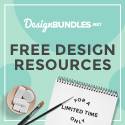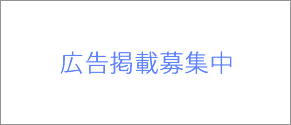WordPressのテーマファイルをHTML5にするチュートリアル
Post on:2012年12月21日
sponsorsr
このサイトはまだHTML5にしてないので、WordPressのテーマファイルをXHTMLからHTML5にするステップごとに解説されたチュートリアルを紹介します。

Convert Your WordPress Theme to HTML5
下記は各ポイントを意訳したものです。
- チュートリアルのゴール
- HTML5のベーシックなレイアウト
- Step 1: header.phpをHTML5化
- Step 2: index.phpをHTML5化
- Step 3: sidebar.phpをHTML5化
- Step 4: footer.phpをHTML5化
- Step 5: single.phpをHTML5化
- Step 6: style.cssをHTML5化
チュートリアルのゴール
このチュートリアルは、XHTMLでつくられたWordPressのテーマファイルをHTML5にするものです。テーマファイルはそれぞれ違うファイルで構成されているので、ここではよくあるファイル構成を元にステップごとに解説します。
テーマファイルのリストは、下記の通りです。
- header.php
- index.php
- sidebar.php
- footer.php
- single.php
HTML5のベーシックなレイアウト
チュートリアルに入る前に、基本的なHTML5のレイアウトを見てみましょう。
HTML5は、まずはDOCTYPE宣言から始めます。いくつかHTML5で新しく加わった要素があり、全体的により少ないコードで記述されているのが分かるでしょう。
HTML5
<!DOCTYPE html> <html lang="en"> <head> <title>TITLE | Slogan!</title> </head> <body> <nav role="navigation"></nav> <!--Ending header.php--> <!--Begin index.php--> <section id="content"> <article role="main"> <h1>Title of the Article</h1> <time datetime="YYYY-MM-DD"></time> <p>Some lorem ispum text of your post goes here.</p> <p>The article's text ends.</p> </article> <aside role="sidebar"> <h2>Some Widget in The Sidebar</h2> </aside> </section> <!--Ending index.php--> <!--begin footer.php--> <footer role="foottext"> <small>Some Copyright info</small> </footer> </body> </html>
HTML5の要素としては、header, footer, nav, section, articleをどこに使用すべきか知っておく必要があります。XHTMLのdivで構造化したコンテンツを各要素に照らし合わせてください。
Step 1: header.phpをHTML5化
WordPressのテーマファイルのヘッダに使用される「header.php」をHTML5にしてみましょう。
XHTML: header.php
<!DOCTYPE html PUBLIC "-//W3C//DTD XHTML 1.0 Transitional//EN" "http://www.w3.org/TR/xhtml1/DTD/xhtml1-transitional.dtd">
<html xmlns="http://www.w3.org/1999/xhtml">
<head>
<title>My Blog</title>
<?php wp_head(); ?>
</head>
<body>
<!-- Header -->
<div class="header">
<div class="container">
<h1><a href="<?php bloginfo('url');?>">My Blog is Working Great.</a></h1>
</div><!-- End Container -->
</div><!-- End Header -->
<!-- Navigation Bar Starts -->
<div class="navbar">
<div class="container">
<ul class="grid nav_bar">
<?php wp_list_categories('navs_li='); ?>
</ul>
</div>
</div>
<!-- Navigation Bar Ends -->
<div class="container">
HTML5のセマンティックなマークアップは非常にシンプルです。各要素を理解し管理することが非常に簡単で、マークアップを減らします。
HTML5: header.php
<!doctype html>
<html>
<head>
<title>My Blog</title>
<?php wp_head(); ?>
</head>
<body>
<!-- Header -->
<header>
<div class="container">
<h1 class="grid"><a href="<?php bloginfo('url');?>">My Blog is Working Great.</a></h1>
</div>
</header>
<!-- End Header -->
<!-- Navigation Bar Starts-->
<nav>
<div class="navbar">
<ul class="grid nav_bar">
<?php wp_list_categories('title_li='); ?>
</ul>
</div>
</nav>
<!-- Navigation Bar Ends -->
<section class="container">
HTML5に変換したコードは、XHTMLのコードと非常に類似しています。いくつか変更のポイントを見てみましょう。
-
- doctype
- HTML5のDOCTYPEは非常にシンプルです。
-
- header
- コンテンツのヘッダにあたる箇所はheaderを使用します。
-
- nav
- XHTMLでdivを使用していたナビゲーションはnavを使用します。
メモ
若干の人々はheader内にsectionを含めます。これは多くの討論があります。個人的にはシンプルな構造を破壊するので、sectionを含めるのは反対です。もちろん、昔使ったdivを使うこともできます。
スクリプトとスタイルシート
外部スクリプトやスタイルシートを含めるのも、HTML5は非常にシンプルです。単にscript, linkタグを使用するだけです。「type="text/javascript"」「type="text/css"」は削除してください。
古いブラウザへの対応
HTML5をサポートしていないブラウザの対応は、「Modernizr」などのスクリプトを使用します。これはheader.phpに記述するのではなく、テーマファイル内のfunction.phpに加えます。
function html5_scripts()
{
// Register the Modernizr script
wp_register_script( 'modernizr', get_template_directory_uri() . '/js/Modernizr-1.6.min.js' );
// Enqueue Modernizr
wp_enqueue_script( 'modernizr' );
}
add_action( 'wp_enqueue_scripts', 'html5_scripts', 1 );
Step 2: index.phpをHTML5化
index.phpはヘッダ・フッタ・サイドバーを除いたコンテンツ部分で、トップページや各記事ページに使用されます。
まずはindex.phpの構造をシンプルにしたものから始めます。
XHTML: index.php: シンプル版
<div id="container"> <div id="content"> <div id="entries"> <div id="post">...</div> </div><!--Ending Entries--> <?php get_sidebar(); ?> </div><!--Ending content--> </div><!--Ending container--> <?php get_footer(); ?>
構造を変えずに、HTML5にしてみましょう。
HTML5: index.php: シンプル版
<div id="container"> <div id="content"> <section id="entries"> <article id="post">...</article> </section><!--end entries--> <?php get_sidebar(); ?> </div><!--end content--> </div><!--end wrap--> <?php get_footer(); ?>
ここでのポイントはレイアウトをするために、section, article, asideの3つのHTML5の基本的なレイアウトモデリングタグを使用しています。entriesのdivはsectionに、postのdivはarticleに置き換えられています。asideは次のステップで、サイドバーで使用します。
-
- section
- ブロックを切り離すためにsectionを使用します。
-
- article
- 記事の箇所に使用するセマンティックなタグです。
-
- aside
- サイドバー用のセマンティックなタグです。
-
- パンくずやページナビゲーション
- パンくずの実装はdivでよいでしょう。
- ページナビゲーションはその意味を考えるとnavで実装すべきでしょう。
HTML5: index.php: コンプリート版
<section class="entries">
<?php if (have_posts()) : while (have_posts()) : the_post();
<article class="post" id="post-<?php the_ID(); ?>">
<aside class="post_image">
<?php
if ( has_post_thumbnail() ) {
the_post_thumbnail();
} else { ?>
<a href="<?php the_permalink() ?>"><img src="<?php bloginfo('template_directory');?>/images/noImage.gif" title="<?php the_title(); ?>" /></a>
<?php }?>
</aside>
<section class="post_content">
<h1><a href="<?php the_permalink() ?>" rel="bookmark" title="<?php the_title(); ?>"><?php the_title(); ?></a></h1>
<p><?php echo get_the_excerpt(); ?></p>
<a href="<?php the_permalink() ?>" rel="bookmark" title="<?php the_title(); ?>" class="read_more ">Read More</a>
</section>
<section class="meta">
<p> <?php the_category(',') ?></p>
<p><?php the_tags(""); ?></p>
</section>
</article>
<?php endwhile; else: ?>
<p>
<?php _e('Sorry, no posts matched your criteria.'); ?>
</p>
<?php endif; ?>
<?php posts_nav_link(' ⏼ ', __('« Newer Posts'), __('Older Posts »')); ?>
</section>
Step 3: sidebar.phpをHTML5化
sidebar.phpはページのサイドバーに使用されるファイルです。
XHTML: sidebar.php
<div id="sidebar">...</div>
たいていのテーマファイルはdivを使用しているので、asideに変更します。
HTML5: sidebar.php
<aside id="sidebar">...</aside>
Step 4: footer.phpをHTML5化
footer.phpはページのフッタに使用されるファイルです。
XHTML: footer.php
<div id="footer"> <div id="foot_widgets">...</div> <div id="copyright">...</div> </div> <?php wp_footer(); ?> </body> </html>
divで囲まれていたフッタのエリアをfooterに変更し、各ウィジェットをsectionで配置します。
HTML5: footer.php
<footer id="footer"> <section id="foot_widgets">...</section> <section id="foot_widgets">...</section> <section id="foot_widgets">...</section> <div id="copyright">...</div> </footer> <?php wp_footer(); ?> </body> </html>
Step 5: single.phpをHTML5化
single.phpはシングルページ用のファイルです。
XHTML: single.php
<?php get_header(); ?>
<?php if (have_posts()) : while (have_posts()) : the_post(); ?>
<div class="container">
<div class="breadcrumbs"><?php the_breadcrumb(''); ?></div>
<div class="content">
<h1><a href="<?php the_permalink() ?>" rel="bookmark" title="<?php the_title(); ?>"><?php the_title(); ?></a></h1>
<div id="entry-content-single">
<?php the_content('<p >Read More</p>'); ?>
</div>
<div class="meta"> Posted by:
<?php the_author() ?>
<?php edit_post_link(__('Edit This')); ?>
<p><?php the_tags(""); ?></p>
</div>
<div class="clearfix"></div>
</div>
<!-- End of post -->
</div></div>
<?php get_footer(); ?>
single.phpは特別な変更はありません。おそらく、sectionとarticleを使うだけのテーマファイルが多いでしょう。場合によっては、timeを使うことがあるかもしれません。
HTML5: single.php
<?php get_header(); ?>
<?php if (have_posts()) : while (have_posts()) : the_post(); ?>
<section class="content">
<div class="breadcrumbs"><?php the_breadcrumb(''); ?></div>
<article class="box">
<h1><a href="<?php the_permalink() ?>" rel="bookmark" title="<?php the_title(); ?>"><?php the_title(); ?></a></h1>
<section id="entry-content-single">
<?php the_content('<p>Read More</p>'); ?>
</section>
<section class="meta"> Posted by:
<?php the_author() ?>
<?php edit_post_link(__('Edit This')); ?>
<p><?php the_tags(""); ?></p>
</section>
<div class="clearfix"></div>
</article>
<!-- end post -->
</section></div>
<?php get_footer(); ?>
メモ
SEOに有利ということで、若干の人々が「<header class="entry-header">」を記事のタイトルの前に使用します。
Step 6: style.cssをHTML5化
最後のステップではstyle.cssに、古いブラウザのために後方互換のスタイルを定義します。
CSS: style.css
header, nav, section, article, aside, figure, footer { display: block; }
style.css内の一番上に記述し、HTML5の各エレメントにブロックのスタイルを定義します。
sponsors











